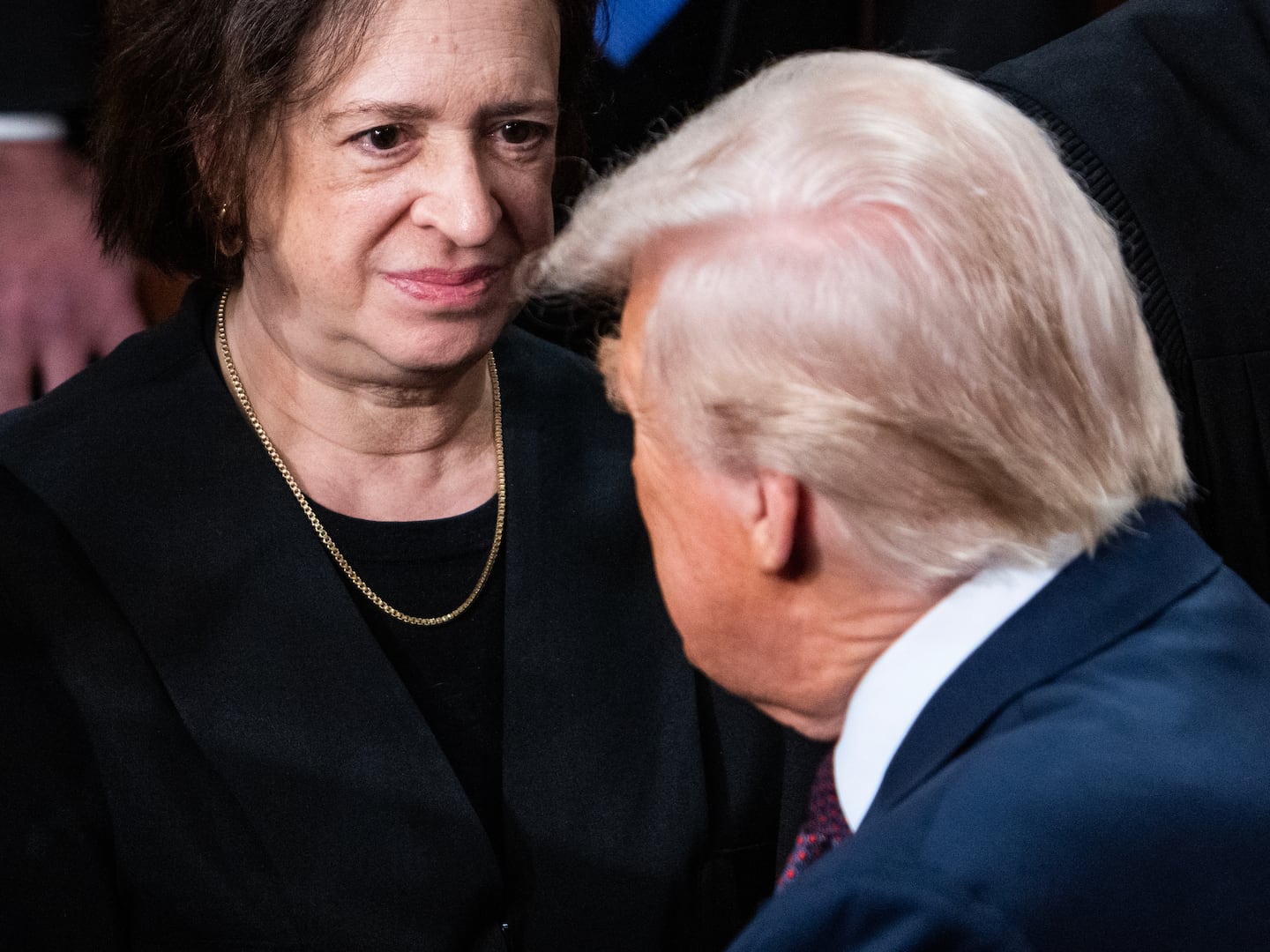After the Washington Post crunched the federal data on reported forcible sex offenses on university campuses, much of the attention was devoted to the schools with the most incidences of rape and the highest rates. Penn State University had the most total reported cases on campus in 2012 (56) and Gallaudet University had the highest rate of reported offenses per 1,000 students (11.39).
But these aren’t the schools we should be worried about. I write that even though Penn State is one of the 64 universities currently being investigated by the U.S. Department of Education’s Office for Civil Rights for its mishandling of sexual assault cases. Several other tony schools cited in the Washington Post analysis as having the highest number of reported offenses—Harvard, Emory, Michigan—and rates—Amherst, Wittenberg, and Swarthmore—are also being probed for Title IX violations. No one will deny these schools' sexual assault responses are in need of scrutiny and improvement.
But they are on notice. The universities we should being paying attention to are the schools without any single reported forcible sex offenses. And there are lots of them. According to the Washington Post, 45 percent of schools with over 1,000 students enrolled reported not a single incident on campus in 2012. Under the Clery Act, schools are forced to disclose “crime statistics for incidents that occur on campus, in unobstructed public areas immediately adjacent to or running through the campus and at certain non-campus facilities including Greek housing and remote classrooms."
According to the White House’s latest numbers, one in five women are sexually assaulted during their time in college (though some critics claim this statistic is based on a study with a sample size that is too limited). A 2000 report from the National Institute of Justice states that over the course of college, up to 20 to 25 percent of women will experience rape or attempted rape, and a 1990 report indicates that one in four women will experience sexual assault during her academic career. As a result, it is statistically impossible for a university not to have suffered any incidences of forcible sexual offenses on campus. When a school reports zero forcible incidents of sexual offenses, it doesn’t mean it’s a campus free of assault; it means it’s a university where people just aren’t reporting it or the school is failing to adequately track it. Tracey Vitchers, a spokesperson for Students Active For Ending Rape (SAFER), says "It's unreasonable to think any school has zero sexual assault or crime." Schools self-report Clery Act numbers, she explains, so there are a number of potential loopholes in the tracking. "There are some accusations of schools under-reporting or misrepresenting. Rather than labeling something as sexual assault, they may label it just as assault so it looks less severe," she says. A school with zero forcible sexual offenses may alsoindicate that "people aren't reporting because of other barriers."
When schools' numbers are deceptively low, their problems with sexual assault may go unnoticed and never face the same scrutiny as the dozens of schools being investigated by the Department of Education. In fact, Vitchers notes that the Office of Postsecondary Education, which tracks schools' Clery Act reporting, is understaffed so "it's very difficult for them to go through every single report with a fine tooth comb. Only when there is a complaint are they really carefully review." Low or zero incidences mask the fact that students at these universities may be too afraid to come forward and report assault to university officials, or they may not know where to go to seek help on campus. In either scenario, sexual assault goes un- or underreported, which only makes improving the campus response more difficult, if not impossible.
Schools with zero reported incidences of sexual assault reveal the problem with relying on Clery Act data or numbers alone in general when evaluating a campus' safety. For example, Barnard College reported zero incidents in 2012, but somehow Columbia University—literally across the street from the school—reported 14 that same year. When asked about this difference in offenses, Stephanie Browne, the associate director of media relations at Barnard, said in an email "We aren't able to comment on the number of reported sexual offenses at Columbia." By no means does this discrepancy indicate that Barnard is necessarily safer for women. In fact, this past April, students jointly filed a federal complaint against both Columbia University and Barnard College for mishandling sexual assault.
Sometimes, Clery Act numbers are thrown off when a large portion of the student population lives off campus. There is virtually no way that a campus like University of Nevada, Las Vegas with nearly 28,000 enrolled students, or California State University-Fullerton with over 37,000 students, had not had a single incident of forcible sexual offense on campus. With both of these universities, only a relatively small portion of students technically live in college-owned or operated housing (six percent for Fullerton and five percent for UNLV). With a smaller on-campus population, fewer students may feel comfortable reporting their assault to campus authorities or may not know even how to report to university security officials. If they go to non-university authorities, the incidents are not tracked under the Clery Act. This obviously contributes to under-reporting and may belie the campus' safety records.Specifically, UNLV does not count and report incidences that are reported to university officials other than UNLV police (UPDATE: UNLV has responded since this article was posted: "UNLV’s annual security report includes incidences reported to the UNLV police services department and from campus officials designated as Campus Security Authorities."). "It's hard to answer why something doesn't occur," says Afsha Bawany, the media relations specialist at UNLV, when asked why the reported forcible sexual offenses are so low. "The Clery numbers reflect incidences reported to UNLV police, but that doesn't mean they haven't come forward to other groups." Under the Clery Act "statistics must be gathered from campus police or security, local law enforcement and other school officials who have 'significant responsibility for student and campus activities.'” Schools use the vagueness of that last category to sometimes avoid tracking incidences reported to counselors, crisis specialists, peer advisers, and other non-police figures. While this is legal and can be out of deference to confidentiality conferred to these specialists, it also help explains why the Clery numbers can be so inaccurate.
An article last month in the Las Vegas Review-Journal mentions the fact that so many UNLV students live off-campus skews the reporting. However, UNVL's latest Clery Act reporting notes only a single incident of forcible sexual assault when taking into account non-campus and public property locations for 2012. Fullerton's most recent report indicates zero offenses even when considering non-campus locales. This suggests that there is indeed a problem with the reporting or tracking of sexual offenses.
The article on UNLV reveals another problem with previous Clery Act reporting: “the report doesn’t cover offenses such as date rape, although the university is working to expand its reporting of assaults.” Bawany contested the accuracy of this claim and said she "confirm[ed] with UNLV Police Services that date rape is reported." But this dispute shows how the way universities define, and therefore track, forms of sexual assault can cause confusion. Many universities have vague—and often overly narrow—conceptions of “forcible sexual offenses.” It wasn't until March of this year when the Campus SaVE Act took effect that the Clery act reporting was broadened “to mandate fuller reporting of sexual violence to include incidents of domestic violence, dating violence, and stalking.”
Other colleges took more overt actions to skew their Clery Act numbers. When Yale University was fined for Clery Act violations in 2013, the Department of Education noted that the school was “not properly defining its campus for the purpose of reporting crime statistics. Specifically, Yale failed to properly define seven spaces in YNHH (Yale New Have Hospital) as campus property for Clery Act purposes.”
There are a number of inadvertent and purposeful ways for universities to skew their Clery Act numbers. For this reason, Gallaudet University’s high rate of forcible sexual assault may actually be a sign the campus is doing something right.
Gallaudet is for the hard of hearing, and the campus is built around supporting this population. People with disabilities tend to be assaulted and abused in higher numbers, with one study claiming that girls who are deaf are sexually abused at twice the rate of girls without hearing disabilities. That may contribute to part of Gallaudet’s high rate, but its students are also more likely to go to campus authorities rather than traditional legal and medical sources. “Our students are more likely to go somewhere on campus and report [assault] than go to a hospital because they have direct access to someone who speaks American Sign Language,” explained Gallaudet spokeswoman Catherine Murphy. “If they went to the local hospital, they would have to wait for interpreters. If they go to campus police or a counselor, they have full communication access.”
Gallaudet offers a variety of sexual assault survivor programs and services specifically tailored to those who are hard of hearing. The university requires students to complete an online tutorial on sexual assault before they enroll, which is delivered in a visual modality to make it easier for the hard of hearing. “We've done a lot of work with the Department of Justice,” says Murphy. “We've been the model for dealing with this population and unique situation.”
Gallaudet makes it easier for students who are hard of hearing to come for sexual assault help, so much so that Murphy says students with hearing disabilities from schools in Washington DC and Virginia will come to the school and report their incidences of assault. She says that Gallaudet is obligated to include these incidences in Clery Act reporting, which also helps explains why their rate is higher.
But that is not a concern for the school because they know numbers alone do not tell the whole story; if anything low or “good” numbers can hide a problem.
Other universities recognize that with a problem as serious campus assault that has so often been veiled in shame and secrecy, reporting relatively higher numbers and rates can be a step forward. As Emory’s senior vice president and dean of campus life said of being listed as having one of the highest number of reported forcible sexual offenses (26), “We're not upset. This issue we don’t want to be hidden at all.”
However, when schools are unable-or actively choose not to-accurately track cases of sexual assaults, there can never be progress. "Schools can create intervention programs, but only if they know what's going on on-campus," says Vitchers. "If it's happening on campus and they don't report to schools, they're [schools] aren't getting the numbers. How do you prevent something if you don't know the scale of where and when it's happening?"






